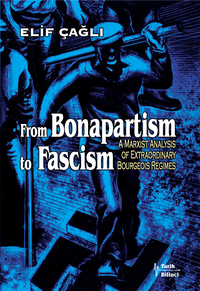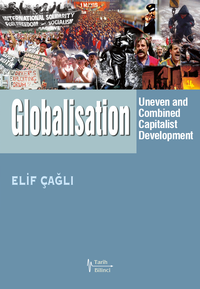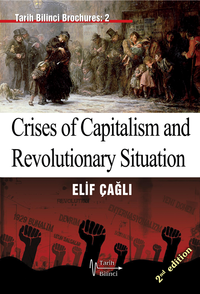As is known, capitalism is based on generalised commodity production. The fundamental feature of capitalist mode of production lies in the fact that the outcome of the production process is not only the value but also the surplus value. Nevertheless, for a well-functioning economy, producing more surplus value is not enough. It must be realised in the market as well. In this way, the capitalist class is able to use a significant part of the realised profit for new investments. Thus, the capitalist production process is materialised as an expanded reproduction process, which is a totality formed by the sphere of production and distribution. But this totality is a contradictory one since there is a lack of harmony between the two spheres, which manifests itself, for instance, in the discrepancies between production and consumption and also between the time of selling and payment.
In order to maintain the expanded reproduction process, capitalists have to increase the social productivity of labour. However, this movement is interrupted by stagnations or discrepancies in capital accumulation. Since capitalism has a tendency to increase production regardless of potential stagnations, this leads to emergence of spasms in the capital accumulation process when problems arise in increasing profitability and realisation of profits. It is precisely this character of the process which plays a central role in causing cyclical crises of overproduction in capitalism. For this reason, there is no separate theory of crisis in the writings of Marx apart from the analysis of capital accumulation process. Because the basic laws of motion of capitalist system are nothing else than the laws of capital accumulation. The source of capitalist crises is the conflict between the capital’s constant desire for expansion and the obstacles created by the workings of capitalism itself. The real barrier of capitalist production is capital itself.
One must therefore not consider economic development an uninterrupted and a linear process. When we examine a process in motion, we discover that different factors create an upward trend at the beginning and raise it up to a peak point. But after this peak point, the same factors begin to turn into their exact opposites and causes of sharp slumps and collapses. In the workings of capitalist economy, every rise is followed by a fall and this phenomenon is one of the laws of motion of the system. Therefore, leaving some financial crises arising from accidental causes aside, the cyclical economic crises discussed here are not accidental events. There is no way for ruling capitalist forces to escape from this kind of crises of the system.
When we examine the history of capitalist system, we discover that it moves along on the basis of successive industrial cycles. These cycles are, above all, driven by periodic reinvestment of fixed capital. Industrial cycles include, as in the breathing process, phases of expansion and shrinkage, in other words, stages of boom and crisis. Marx explains that each cycle goes through successive phases, namely, recession, recovery (medium activity), acceleration (upswing, boom) and depression (crisis, collapse). [1] Crisis is the most important phase of the industrial cycle, enabling one to distinguish the successive cycles. But it would be a serious mistake to regard these periodic fluctuations in capitalist economy as equivalent cycles in terms of their duration and impact. Cycles vary not only by the economic magnitude of the collapses and rises they involve, but also by their durations. For instance, while they were suggested to recur approximately every 10 years in Marx’s time, they took place over shorter time periods in subsequent decades.
Marx refers to industrial cycles in his analysis regarding the whole turnover of the invested capital. He explains that the capital-value invested has to pass through a cycle duration of which, for instance, is determined by the life of fixed capital, that is, its reproduction or turnover time.[2] When circulating capital, that is, the sum of variable capital used in wage payments and certain parts of constant capital such as raw materials and intermediate materials, enters the production process it transfers its value into the product. On the other hand, fixed capital, the part of constant capital which serves in the form of buildings, machinery and equipment, continues to function in subsequent production processes as only part of its value, i.e., its depreciated and depleted part, is transferred to the product. Since the durability of each component of fixed capital is different, Marx assumed that fixed capital outlives its term, in approximately, say, 10 years, until it loses its capacity to yield product and value and has to be renewed. But, he added that it is impossible to offer exact figures since there are too many variables involved. For instance, while technical innovations enable more durable products, at the same time, they necessitate replacement of the same products long before they outlive their usefulness, that is, they lead to moral depreciation.
The transition of capitalist economy from recession to recovery requires adoption of new techniques of production which would enable a more efficient use of labour power –i.e. extracting more surplus value. In its endless pursuit of more profit, capital starts to flow towards the investment areas where profitability is higher and new techniques are implemented to increase labour productivity. Those capitalists who rely on the strength of their capital or who do not hesitate to take risks can make above-average profits during the initial periods of economic recovery. As they increase their labour productivity and reduce the costs of production by adopting a new production technique, they can sell their products for higher prices based on their old values, before the other capitalists make a move. And so, they can make excessive profits. But these excessive profits are, in fact, taken away from the share of other capitalists. With the adoption of new techniques becoming widespread, products would be sold at their new values based on their new and lower costs. As a result, those who made excessive profits at the beginning would come down to the average.
During periods of recovery, demand generally increases while stocks of unsold goods piled up in the previous period start to melt away. The idle capacity of the previous period of depression is reactivated, as some of the closed factories reopen and investments soar. A downward trend in unemployment goes along with a general upward trend in wages. Consumption, prices and average rate of profit are on the rise. There is sufficient amount of currency in circulation, returning quite smoothly and regularly, posing no problem for industrial capitalists. Therefore, during such periods, credits are provided on the most favourable and flexible terms. Loan volume grows while market expands and stock markets flourish. Likewise, no problem arises with the interest rates during boom periods, since there is no serious stagnation in the credit system or speculative heat in the economy. Interest rates remain at low enough levels to encourage investments, though higher than the levels of recession periods.
All these signs of economic recovery stimulate optimism in the market intensely. Investments expand at a great pace owing to the rise in profitability. Unemployment declines further as prices continue to rise and the loan volume grows even more rapidly. As long as things go well, these factors, operating in mutual interaction, enable the economy to remain on an upward trend. Thus, economic recovery climbs up towards the peak, gradually turning into boom. Boom is a period when the economy displays signs of overheating with rising interest rates and with credit bubble inflated by new investors rushing into markets. A tendency towards overproduction becomes evident as a result of the gradually growing capital flow into various sectors in anticipation of high profits. At the end, the rate of profit starts to decline and a new crisis brews.
In addition to brewing cyclic crises, boom process also bears witness to a growing tendency towards speculation. Since the aim of capitalist competition is to obtain more profit. What satisfies capitalists is not manufacturing more products in the field of industry and gaining fame, but obtaining more profit. In this respect Marx points out that in modern capitalism, even a seemingly industrial competition is, in the final analysis, a commercial one. As he explains, in the economic lives of modern nations, there are even some phases when everyone is carried away by the madness of obtaining profit without producing. Yet, there is no magic formula to increase the total amount of profit without producing. Therefore, such seizures of madness based on speculation are nothing but a competition for a bigger slice from the total surplus value already created in the production process.
A careful examination of the process would reveal that the economy is overheated as a result of the tendency towards more investment, higher capacity utilisation and more production, which were all encouraged during the whole course of boom process. Therefore, certain signs of disease in the economy are already evident. But it is impossible to say that these signs become prominent and have broad repercussions in the minds of capitalists immediately and consistently. Capitalist economy, when taken as a whole, is like an extremely complicated organism which makes an easy diagnosis of diseases impossible.
Capitalist accumulation process is doomed to break in many points. Once the economy staggers, all the factors involved increasingly affect each other in a negative way, leading to a collapse of the economy. These breaking points of the expanded reproduction process are the moments which mark the slide of economy from boom into collapse. So, the peak of every boom, in other words, the phase during which capitalists believe that business flourishes, is, in fact, the phase but one before a new collapse. But although a new crisis brews in the last phases of the boom, pay-backs continue regularly for some time, owing to the optimism fuelled by the excessive buoyancy and various kinds of bond games. In this way, on the surface the image of a very profitable business continues its existence for a while. “Business is always thoroughly sound and the campaign in full swing, until suddenly the debacle takes place.” writes Marx.[3] Therefore, every collapse seems to happen too sudden, shocking the bourgeois economists in general and those who trail behind them.
Capitalist system is characterised by combined and uneven development on every level, not only with regard to countries, but also with regard to different industries in a national economy. According to this law, while on the one hand the pace and extent of the economic crisis vary between countries and industries, at the same time the crisis causes a combined effect on all levels. On the basis of this complicated operation the two basic classes of capital cannot respond simultaneously in terms of boosting or curtailing investments. Marx divided all capital into two major classes: “Class I, producing means of production, and Class II, producing articles of individual consumption.”[4] This division within capital, which some authors call first and second department, is important in the sense that it exposes the anarchic nature of capitalism. Although planning is carried out to some extent on the level of big business or cartels, the capitalist economy as a whole can only proceed with imbalances and disproportions. The length of time for the production of the means of production does not match that of consumption articles. The former requires larger-scale capital investments as well as longer production times compared with the latter. For instance, even when the unsold stocks begin to pile up in the textile sector, the companies manufacturing textile machines are still busy fulfilling the orders they have been given in the previous period when the economy was still in upswing. Therefore, the production is not reduced simultaneously in the two departments. This factor is of crucial importance since it intensifies the effects of crises and delays the recovery.
During crisis periods, the economy experiences sudden declines in profit rates, which is accompanied by shrinking investments and piling up of unsold stocks. Then follow mass sackings, decrease in demand and shrinkage in circulation. Prices and wages also decline as the number of workers employed falls and the volume of commercial transactions shrink. The market, already unable to absorb the overproduction, shrinks even further. Loan repayment becomes impossible. During depression, the market seethes with commodities which cannot be converted into money despite falling prices. Marx points out that if there is a disturbance in the expansion or even in the normal flow of the reproduction process, credit becomes scarce and it becomes difficult to obtain commodities on credit. For this reason, one of the fundamental features of the depression phase of the cycle is insistence for cash payment and scrutiny of credit sales. With credit scarcity, the demand for the currency in circulation grows, mirrored in a further rise of interest rates. In such periods, the demand for money originates from the need to pay, rather than to purchase. New loans are sought not for new transactions but to conclude the old ones.
Crisis causes a wave of bankruptcies. Factories which cannot keep up with changing conditions shut down. A substantial part of machinery and fixed capital ceases to be a part of production process and falls into ruin. As a result of a general crisis of confidence surrounding the market, stocks and bonds lose value. The impact of depression would vary among different sections of capital, being determined by the competition. During the periods when things are going well, competition enables a climate of brotherhood among capitalist class by equating the profit rates. But, with crisis, it becomes a life-and-death struggle. As Marx puts it, “as soon as it no longer is a question of sharing profits, but of sharing losses, everyone tries to reduce his own share to a minimum and to shove it off upon another.” Consequently, the competition would turn into a war between brothers. Only survivors can be those major corporations that manage to maintain the production thanks to their mighty financial structures and keep the increase in their total mass of profits despite falling rates of profit. During the period of depression, capital becomes more centralised and restructures itself.
Since capital gains increasingly decline, some capitals would either be liquidated or depreciate and be bought off cheaply by monopolies. With the realization of the results of the crisis, the total social capital depreciates, stock market hits the bottom, interest rates drop, and pessimism dominates the market. Thus begins a period of recession which is not easy to leave behind for an economy that hit the bottom in the crisis. During recession, despite the persistent low level of interest rates, there is a great reluctance to make new investments, since the effects of the crisis are still felt, stocks are mounted, and fear of bankruptcy is still palpable. Depending on the magnitude of the unfolding crisis of overproduction and the extent of its spread on a world scale, the recession may last a relatively short span of time, and undergo a painless transition to recovery, or it may follow an opposite path as seen in the Great Depression of 1929 as well as the present crisis.
The economic crisis opens up new room for growth for capitalists, saving them from problems caused by overproduction and excess capacity. As the crisis eliminates less competitive capitals, those remaining become able to share the total surplus value at a higher rate of profit. And the rate of exploitation also rises if the working class cannot prevent wage reductions. If all these factors work in combination in such a way as to put an end to recession, the capitalist economy enters into a recovery phase. Having hit its peak during the period of crisis, unemployment begins to decline. And prices rise as a result of growing demand. Signs of recovery create an optimistic mood, triggering the desire to generate more profit. Thus, the capitalist economy moves forward towards a new boom period. But, inevitably, another crisis of overproduction breaks out in the end. Therefore, the history of capitalist development is also the history of depressions, which become gradually more and more severe. In Marx’s words: “Capitalist production seeks continually to overcome these immanent barriers, but overcomes them only by means which again place these barriers in its way and on a more formidable scale.”[5]
Cyclical crises of capitalism are both the inescapable disease of the system and its remedy which enables further operation despite all contradictions and disproportions. The depression serves for nothing else than to forcibly unite the phases of production process that had become independent from one another. Proceeding through and on the basis of crises, this system has, in fact, an unsteady character like a jigsaw puzzle, despite all the economic growth achieved. Marx and Engels strikingly pointed out this reality in the Communist Manifesto many decades ago. There, the question as to how the bourgeoisie overcomes the crises is answered as follows: “On the one hand by enforced destruction of a mass of productive forces; on the other, by the conquest of new markets, and by the more thorough exploitation of the old ones. That is to say, by paving the way for more extensive and more destructive crises, and by diminishing the means whereby crises are prevented.”[6]
[1] Many writers use different concepts for the phases of the cycle which in the last analysis come down to the same meanings. For example, it will make no essential difference at all to use the concepts of upswing, prosperity, or boom for the phase of acceleration; or to use the words crisis, depression, collapse etc. for the phase of crisis. There are also variations in translations of the words in western languages into Turkish. For example, you can find crisis, recession in dictionary as senses of depression, and also you can find the same words for recession. Moreover, one should remember that phases of the industrial cycle are not completely isolated from one another. Thus, for instance, the phases of crisis and recession are as if intertwined. Marxism approaches the concrete reality of things in their dialectical and transitional relations between the phases of their development. And one needs to be alert indeed in face of conceptual speculation in the context of capitalist crises. We must remember that in order to obscure the truth of capitalist crises economists in western capitalist countries always employ new concepts. For example they use recession in place of depression as it reminds the bad memories of the 1929 crisis; or slump in place of collapse and so on and forth. The bottom line is that we need to avoid sliding towards empty debates caused by conceptual variations instead of trying to understand the essence of the subject. To avoid confusion I should like to say that I will deal with the capitalist industrial cycle on the basis of the phases of recovery, boom, crisis and recession. While the word boom has the general meaning of rise, the specific meaning it would carry in the progress of the cycle is not an ordinary rise (say, a recovery in the sense of a medium level of activity), but a high level of activity, a remarkable acceleration, as Marx pointed. Lastly I should like to remind that in designating the fluctuations observed on the capitalist curve of development I preferred to use concepts as rise and fall (or descend). Not to contribute any ambiguity by making these fluctuations long term equivalents of the industrial cycle I avoided using words such as long term boom or long term crisis. As will be pointed out in this booklet whatever direction long term fluctuations take – either rise or descend – capitalism makes its way through industrial cycles according to its laws of motion, i.e. crises and booms to name the main phases.
[2] Capital, Vol.2, p.128
[3] Capital, Vol.3, p.332
[4] Capital, Vol.3, p.581
[5] Capital, Vol.3, p.171
[6] Selected Writings (ed. David McLellan), p.250
link: Elif Çağlı, Capitalism Advances on the Basis of Industrial Cycles, 2 November 2003, https://enternasyonalizm.org/node/602






